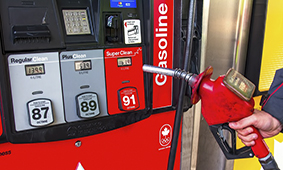
Viewpoint: NYH gasoline to remain well-supplied

The domestic pipeline arbitrage to ship gasoline from the US Gulf coast to New York Harbor is likely to remain open through spring. The Colonial pipeline has been fully booked for the segment between Pasadena, Texas, to Greensboro, North Carolina, through mid-January. In 2019 the pipeline was allocated through cycle 9, which pumped in the Gulf coast in late February and delivered into Linden, New Jersey, in March.
The domestic arbitrage is likely to remain open until the Gulf coast refiners head into maintenance. The gasoline arbitrage on the Colonial pipeline has averaged 9.5¢/USG so far in December, compared to 8.7¢/USG last year.
The arbitrage has been supported by bearish fundamentals on the Gulf coast, where gasoline stocks have been increasing since early November and reached their highest level in four months at 83.5mn bl the first week of December, according to the US Energy Information Administration. This depressed Gulf coast gasoline differentials, which have been steadily declining since late November. Stocks were slightly higher last year at 83.8mn bl for the same week in December.
As a result of increased shipping demand, Colonial pipeline line space values have traded in positive territory since mid-October and increased to their highest point this year at +4.58¢/USG on 16 December.
Most of the gasoline that has shipped on the Colonial pipeline over the past few months made its way further north to Linden from Greensboro. The majority of these batches are used to blend finished gasoline in New York Harbor. Local stub lines in the northeast have become allocated amid these increased deliveries.
Imports from Europe into New York Harbor have supplemented domestic flows for the past few months and are likely to continue into early 2020. As much as 2mn bl of gasoline has loaded from Europe during the 1-23 December period headed for New York, according to oil analytics firm Vortexa. Those shipments average 84,000 b/d so far in December, up from an average of 62,000 b/d in December 2018.
European supplies are likely to remain robust despite higher transatlantic freight rates next year. Rates averaged $25/t so far in Decemberfor 37,000t clean vessels between northwest Europe and New York Harbor, the highest monthly average this year, and $1.85/t above last December. Yet this has not deterred shipment because of a lack of alternative outlets.
Clean freight rates are likely to continue to increase with the marine industry's switch to maximum 0.5pc sulfur fuels in January. But even with the increase, New York Harbor is likely to remain one of the highest margin outlets for European gasoline exporters.
Gasoline inventories reached a ten-week high at33.6mn bl in mid-December in New York Harbor, data from the US Energy Information Administration (EIA) show. RBOB stocks, at 20.8mn bl the second week of December, were 10pc above the five-year average for the week.
By Stephanie Crawford


Trump weighs using $2 billion in CHIPS Act funding for critical minerals

Codelco cuts 2025 copper forecast after El Teniente mine collapse

Electra converts debt, launches $30M raise to jumpstart stalled cobalt refinery

Barrick’s Reko Diq in line for $410M ADB backing

Abcourt readies Sleeping Giant mill to pour first gold since 2014

Nevada army depot to serve as base for first US strategic minerals stockpile

SQM boosts lithium supply plans as prices flick higher

Viridis unveils 200Mt initial reserve for Brazil rare earth project

Tailings could meet much of US critical mineral demand – study

Kyrgyzstan kicks off underground gold mining at Kumtor

Kyrgyzstan kicks off underground gold mining at Kumtor

KoBold Metals granted lithium exploration rights in Congo

Freeport Indonesia to wrap up Gresik plant repairs by early September

Energy Fuels soars on Vulcan Elements partnership

Northern Dynasty sticks to proposal in battle to lift Pebble mine veto

Giustra-backed mining firm teams up with informal miners in Colombia

Critical Metals signs agreement to supply rare earth to US government-funded facility

China extends rare earth controls to imported material

Galan Lithium proceeds with $13M financing for Argentina project

Kyrgyzstan kicks off underground gold mining at Kumtor

Freeport Indonesia to wrap up Gresik plant repairs by early September

Energy Fuels soars on Vulcan Elements partnership

Northern Dynasty sticks to proposal in battle to lift Pebble mine veto

Giustra-backed mining firm teams up with informal miners in Colombia

Critical Metals signs agreement to supply rare earth to US government-funded facility

China extends rare earth controls to imported material

Galan Lithium proceeds with $13M financing for Argentina project

Silver price touches $39 as market weighs rate cut outlook

















